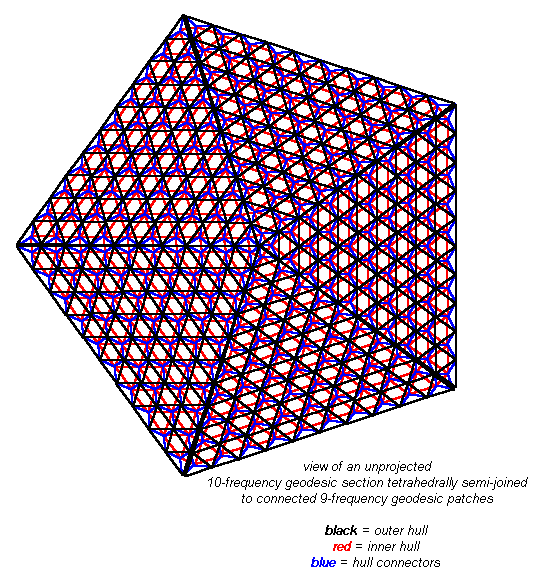
David Anderson
Originally written in May 1998
With the framework of the backyard greenhouse done, my thoughts turned to a bigger domed structure: in particular, planning a 50' diameter, 10-frequency dome. The struts would be between 2.5' and 3.5' long, and 1500 of them would be needed for a half spherical structure. It would be as tall as a three story building, and using the technique previously detailed, once the struts were fabrcated, ought to go up very quickly with 25 helpers. Using bolts and wing nuts, it could be constructed a layer at a time, with the layer "rings" being pre-built. Twenty-eight different strut lengths would be required.
After a quick note to the geodesic group announcing my intentions, I got back quite a few supporting notes - with quite a few novel uses for such a structure. But I also got back some notes which expressed concern about the tolerances required and instability of larger domes fabricated with something as pliable as PVC pipe. Sections could "dimple" if measurements were not precise or too much localized pressure was exerted - the structure might even collapse under its own weight! It's a scary thought - I'd hate to invest a lot of time and effort into something that could fall down due to poor planning or a wrong choice of materials.
This lead to the thought of building reinforcement into the structure; it would increase the weight, but also increase the local structural integrity. After some thought experimentation, I decided a 9-frequency geodesic patch situated "inside" each 10-frequency patch, connected together by struts, would work well. I believe that an even-odd offset would be optimal since then not every triangle in the grid would have to be fully connected: each internal vertex in the outer shell would only have to be connected to nine struts, while the external vertices would connect to ten struts. The inner shell would similarly have nine-strut internal vertices, with the external vertices connected to eight on the edges and seven at the "points".
Interestingly enough, the pattern matches the one needed for close-sphere packing - it's the geodesist's friend, the octet truss, bent to wrap a geodesic sphere.

At this point some programming is required to calculate the layering of the geodesic patches. Basically, figuring out where the vertices in the outer and inner shell are - a derivation of the previous code, and what the lengths of the connectors needed between the shells and inner patches are - new code. That work will be reported in Part II.